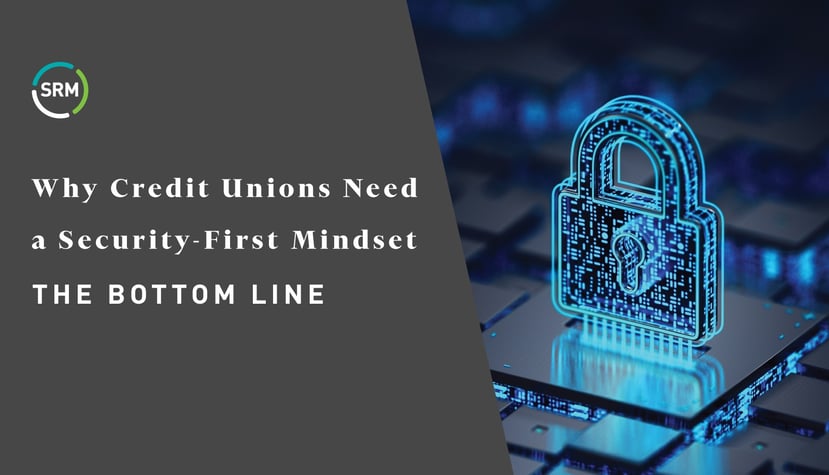
It is a scenario every credit union dreads – a security breach that either compromises member data or locks employees out of network servers.
The threat is real for credit unions of all sizes, creating the potential for legal, regulatory, and reputational risk. Cybercriminals are getting increasingly more resourceful while finding new ways to capitalize on ill-prepared financial institutions.
Credit unions are attractive targets because they store and process sensitive financial data, such as member account details and transaction records.
This is why having a security-first mindset that includes all operational aspects of the credit union and buy-in from management, the board, and front-line and back-office employees is so important. Doing so can mitigate your credit union’s exposure and establish a playbook to handle any possible breaches.
A Look at Security Risks
There are myriad ways that cybercriminals can take advantage of lax security measures. In many ways, the risks are like those in recent years, but geopolitical and economic uncertainty are reshaping the threat landscape.
Phishing and ransomware attacks remain popular forms of criminal activity. There are also supply chain attacks, where third-party vendors are the target, given the highly confidential nature of the data they store.
Threat actors are also creating new revenue streams built around attacks as a service – a marketplace where sensitive information such as domain and IP documentation is leaked. AI and machine learning could also lead to new cybersecurity challenges. All of these methods pose a threat to credit unions and must be taken seriously.
Cyberattacks have a high cost too. A recent IBM study found that the average financial hit tied to a breach was $4.35 million in 2022, and the associated cost is expected to rise in 2023. And this figure doesn’t account for the financial impact of distressed members who leave the credit union or the uncertain financial burden of increased compliance.
What is a Security-First Mindset?
Having a security-first mindset means you are making security a priority at the beginning of any initiative. If you are introducing a new product, you should make sure to introduce security protections at the same time. Doing so should shield you from the threats early in the implementation process.
This mindset should permeate your organization. Management should include someone with expertise, or the credit union should consider hiring an experienced consultant. The board should feel empowered to ask questions about cybersecurity measures.
Employee training is another key protocol for putting security first, helping your staff understand how to protect data (individually and collectively), identify warning signs, respond when necessary, and stay up to date on any new cybersecurity schemes that may take place.
Zero Trust Architecture
Enhanced cybersecurity requires awareness programs, access controls (including encryption), and a strong response plan. Information-sharing forums can help you stay in the know about new and emerging threats.
Many companies are considering a zero trust architecture that challenges the traditional parameter-based security model.
Zero trust architecture assumes that a company should not immediately trust anybody – including users, devices, and networks – inside or outside the organization. It emphasizes verifying and validating every access request and transaction regardless of origin or location.
There are several critical principles associated with this approach.
Least privilege: Users are only granted the minimal level of access required to perform their tasks.
Micro-segmentation: Networks are divided into smaller zones, providing granular control over access between different resources.
Continuous authentication: This involves constantly validating and verifying the identity and security posture of all users and devices.
Other practices associated with zero trust architecture include multi-factor authentication (MFA) and constant security monitoring. Again, training employees is critical to making this practice successful.
Balancing Security and Modern Convenience
Having a security-first mindset requires credit unions to weigh a variety of tradeoffs. Enhanced measures, including zero trust architecture, can improve security, visibility, and control while providing your team with flexibility and agility regarding emerging threats.
There are clear roadblocks when prioritizing security, including resource constraints, organizational culture, and the ever-evolving cybersecurity landscape. Employees need education, given the increased complexity tied to new security measures, and legacy systems may have vulnerabilities.
Of course, there is always a need to strike a balance between heightened security and member convenience. This can be a source of friction within the credit union. There is also a cost associated with enhancements – overall operational overhead expenses should be anticipated.
The Bottom Line
Cybercriminals are only becoming more sophisticated and determined in their quest to identify and exploit system vulnerabilities. New threats are constantly emerging, creating the need to have processes and systems that can evolve and adapt over time.
Credit unions slow to acknowledge and prepare will succumb to the speed of this cyberattack activity. Now is the time to audit existing systems and lay the groundwork for any necessary improvements to your infrastructure. Don’t be the cautionary tale. Make security your first thought instead of an afterthought.


